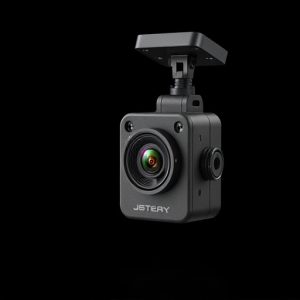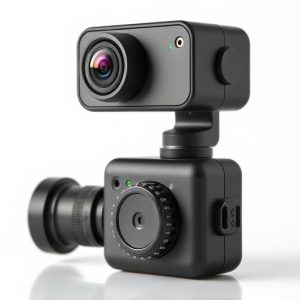Portable Hidden Camera with Audio: A Comprehensive Guide to Design, Features, and Legal Use
Portable hidden cameras with audio have revolutionized surveillance technology by offering high-qual…….
Portable hidden cameras with audio have revolutionized surveillance technology by offering high-quality, covert recording capabilities that blend into daily environments. These devices seamlessly record both visual and auditory evidence, with advanced miniaturization ensuring their discreet presence while delivering clear footage. They are equipped with motion detection to optimize storage by capturing only essential moments and offer remote monitoring via secure mobile apps or internet connections, allowing users to keep an eye on their properties from anywhere. The integration of audio recording is particularly significant for a more comprehensive surveillance experience, crucial for security, personal safety, and investigative purposes. These cameras are indispensable in scenarios requiring covert surveillance, providing protection and evidence collection that can be pivotal in various contexts, including legal matters and crime prevention. When selecting one of these devices, considerations include the balance between discreetness and recording quality, the necessity for high-definition video and audio, battery life, motion detection capabilities, storage options, and ease of access to recordings. Legal and ethical use is paramount, as surveillance laws vary by jurisdiction, with stricter regulations often governing audio recordings. Users must adhere to these legal frameworks and reflect on the moral implications of privacy infringements to responsibly utilize portable hidden cameras with audio.
Exploring the covert capabilities of modern surveillance, this article delves into the inner workings and applications of small spy cameras. From their inconspicuous design to the critical features that enhance their functionality, we’ll guide you through selecting a portable hidden camera with audio that suits your needs. Additionally, we’ll navigate the complexities surrounding legal and ethical considerations in covert audio surveillance, ensuring users are well-informed on best practices and use cases. Join us as we unravel the world of discreet audio intelligence.
Unveiling the Stealthy Operation of Portable Hidden Cameras with Audio
Portable hidden cameras with audio capabilities represent a significant advancement in surveillance technology, offering users the ability to capture both visual and auditory evidence discreetly. These devices are designed with stealth as a priority, ensuring they remain undetected by the uninitiated. They often come in the form of everyday objects, such as clocks, smoke detectors, or even wall outlets, blending seamlessly into their surroundings. The integration of microphones allows for the recording of conversations and ambient sounds, providing a comprehensive record that can be crucial for security purposes or investigative work.
The operation of these cameras relies on cutting-edge miniaturization technology, enabling them to capture high-quality video and audio without drawing attention. Users benefit from remote monitoring through mobile apps or secure internet connections, giving them real-time access to the footage collected. This technology is particularly valuable for individuals seeking to monitor home or business premises while away, for nanny cams, or for personal security measures in environments where covert surveillance is essential. The audio feature complements the visual data, adding depth and context to the recordings, which can be pivotal in various situations, from legal documentation to catching a would-be intruder.
The Anatomy of a Miniature Spy Camera: Design and Functionality
Miniature spy cameras have become increasingly sophisticated, blending seamlessly into everyday environments. Their design is meticulously crafted to be compact and inconspicuous, allowing them to be positioned in a variety of settings without drawing attention. These devices often resemble common objects, such as a wall clock, a smoke detector, or even a simple pen, enabling users to capture footage covertly. The portability of these hidden cameras with audio is a critical feature, facilitating their use in both fixed and mobile surveillance scenarios.
In terms of functionality, these tiny devices are equipped with advanced components that belay their small size. A high-definition lens captures clear visuals, complemented by built-in microphones that record crisp audio. The integration of motion detection ensures that the camera only begins recording when movement is detected, conserving storage space and focusing on moments of interest. Many models feature Wi-Fi connectivity, allowing for real-time monitoring and remote control through a dedicated app. This connectivity also simplifies the process of accessing, storing, and sharing the recorded data securely, making these portable hidden cameras with audio indispensable tools for various applications, including home security, personal safety, and undercover operations.
Top Features to Consider in a Compact Hidden Camera with Audio Recording
When selecting a compact hidden camera with audio recording capabilities, discerning users should prioritize features that balance discreetness with functionality. A key consideration is the resolution and quality of both video and audio capture. High-definition recording ensures that the footage obtained is clear and usable for various applications. The device’s audio clarity is equally important; advanced microphones can pick up sound from a distance and filter out background noise, making voices crisp and intelligible.
Another essential feature to look for in portable hidden cameras with audio is the battery life. A camera equipped with long-lasting power enables it to operate covertly for extended periods without the need for frequent recharging. Additionally, the ability to record continuously or trigger recording based on motion detection can be vital, depending on the use case. For instance, if monitoring a specific area, motion-activated recording can save space and focus on what’s important. Furthermore, users should consider the camera’s storage capacity or its compatibility with external storage solutions, as high-resolution footage can consume significant amounts of space. The ease of accessing, managing, and retrieving recordings, whether through an SD card or cloud storage integration, is paramount for practicality and convenience. Lastly, the camera should offer a user-friendly interface and be compatible with various devices, allowing users to set it up quickly and review footage without complications.
Mastering Discreet Audio Surveillance: Best Practices and Use Cases
When integrating a portable hidden camera with audio into your surveillance setup, mastering discreet audio surveillance is paramount. These devices are designed to be inconspicuous, capturing clear audio while remaining undetected by subjects under observation. To achieve this, it’s crucial to select a camera that offers high-quality sound recording capabilities along with a reliable and secure power source to ensure continuous operation. Positioning the device in an environment where sound quality won’t be compromised by ambient noise or echoes is also essential.
Best practices for discreet audio surveillance involve careful planning and testing. Begin by assessing the acoustics of the target area, considering factors such as background noise levels and potential sound sources that could interfere with recording clarity. Position the camera strategically to minimize these issues, ensuring the microphone is oriented towards the focal points of interest. Additionally, using wind protection accessories or adjusting the camera settings can mitigate external sounds. Testing the equipment before deployment guarantees optimal performance and reliable data capture.
Use cases for portable hidden cameras with audio are vast, ranging from personal security to professional investigations. They are invaluable tools for individuals seeking to monitor their property while away, providing peace of mind through real-time alerts and recordings. In the realm of professional surveillance, these devices aid law enforcement and private detectives in gathering evidence by capturing high-quality audio alongside video footage, which can be crucial in legal proceedings. The ability to covertly record interactions ensures that critical moments are not missed, providing clear evidence when required. Whether for security or investigation, the technology behind portable hidden cameras with audio continues to advance, offering users increasingly sophisticated tools for discreet monitoring and surveillance.
Legal Implications and Ethical Considerations When Using Portable Hidden Cameras with Audio
The deployment of portable hidden cameras with audio in both public and private spaces raises significant legal and ethical concerns that must be carefully navigated. Legally, the use of such devices is often governed by surveillance laws which vary by jurisdiction. These laws dictate when and where it is permissible to record individuals without their consent. In some regions, there are strict regulations on audio recording due to privacy laws that protect personal conversations. Users must ensure compliance with these statutes to avoid unlawful surveillance or legal repercussions, including criminal charges for invasion of privacy.
Ethically, the use of hidden cameras with audio raises questions about consent and the right to privacy. These devices can capture sensitive information without the knowledge of individuals involved, leading to potential misuse or exploitation of the recorded material. The ethical implications extend to the impact on trust within relationships and social settings, as well as the potential for covert monitoring to be used for malicious intent. It is imperative for users to reflect on the moral dimensions of their recording practices and consider the long-term consequences of their actions on individuals and society at large. The responsibility to use such technology ethically and lawfully cannot be overstated, as it balances the need for security and documentation with the fundamental right to privacy and dignity.


